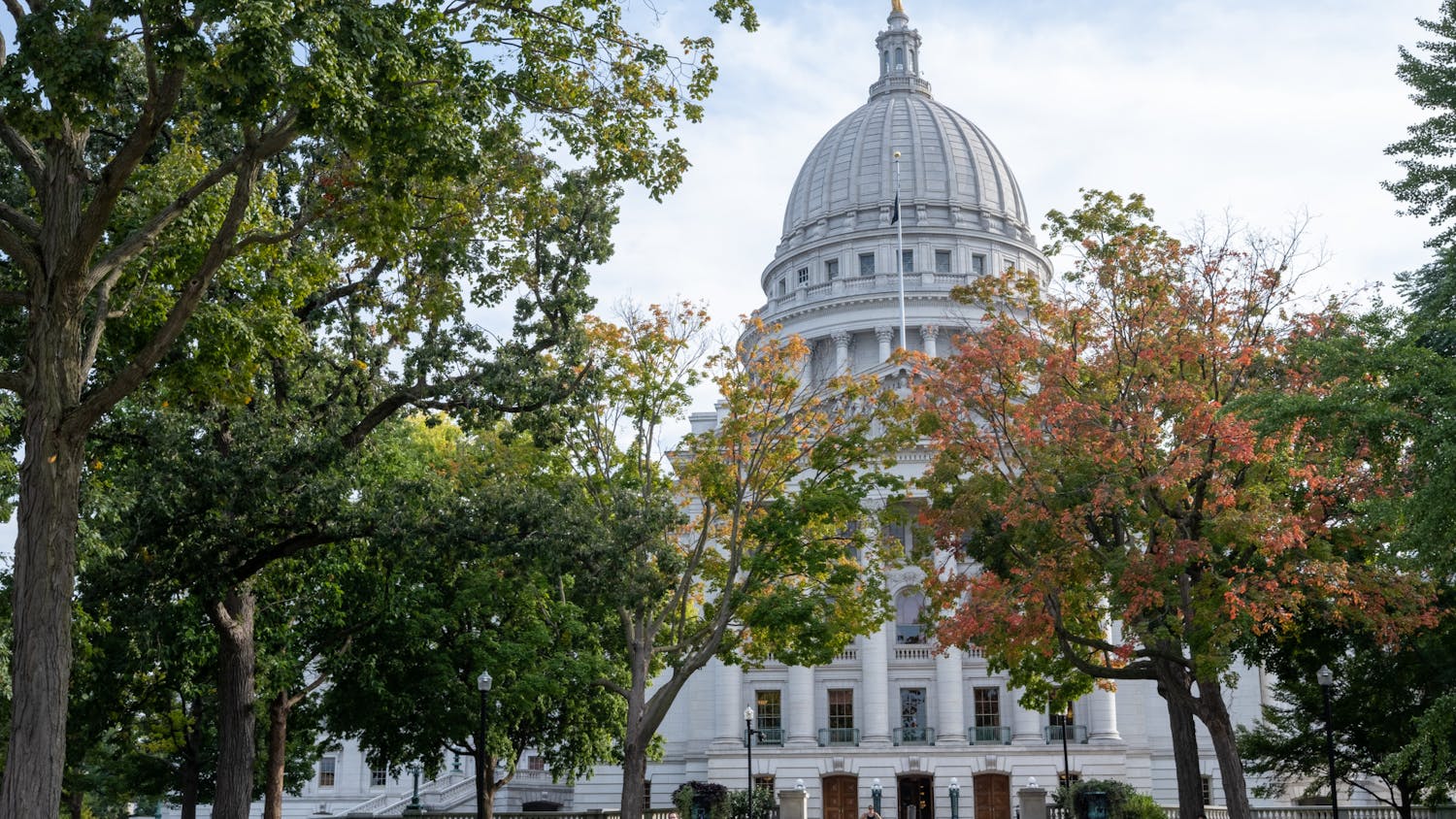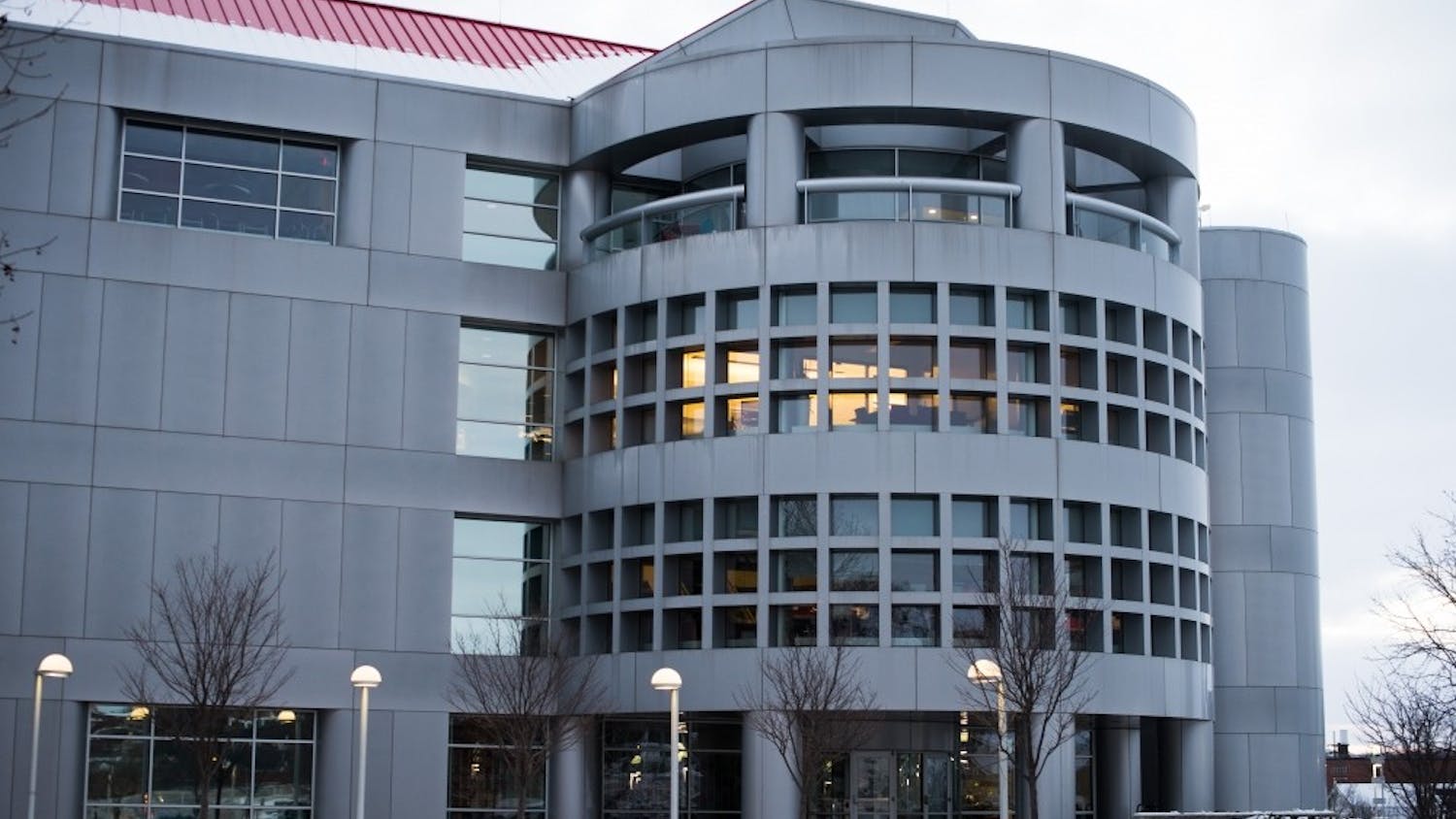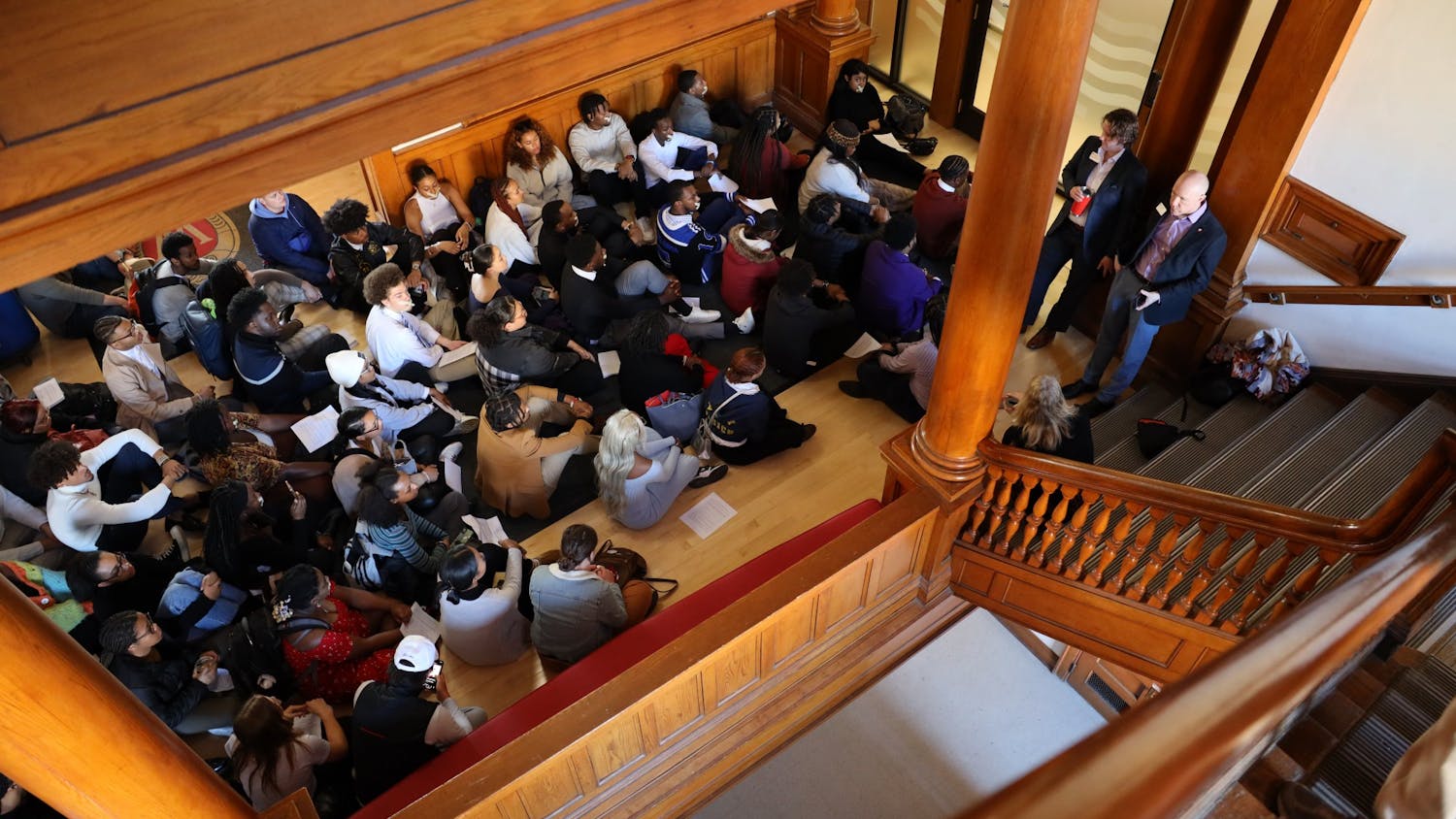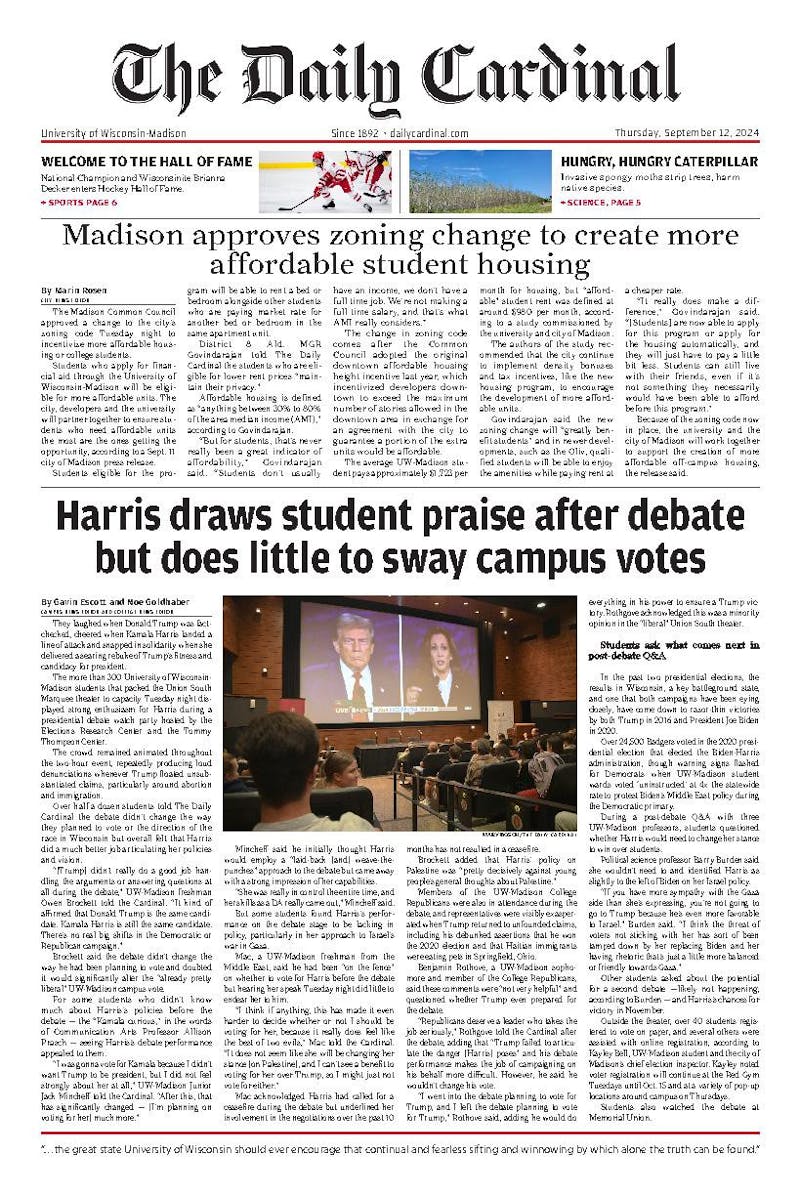Students, Halloween is not over. Ghosts and spirits do not discriminate based on weekdays when they choose to do their yearly haunting. For many students, the festivities are all but finished. A few creepy stories that have stood the test of time are in order, in honor of the night that has been huge on the UW-Madison campus since the beginning of the university.
Before State Street became the place to be for people-watching on Halloween, stories and legends began circulating around college campuses across the country for years. At UW-Madison, Halloween has long been a favorite holiday with the masses.
When North and South Halls were used as dormitories and lacked indoor plumbing, the outhouses were often tipped over by students on Halloween night. Like the craziness that ensues on Oct. 31 or the weekend immediately preceding it, a few \urban legends"" of Madison's own originated on campus with the beginning of the university.
There are some rampant urban legends. One is the myth that the roommate of someone who commits suicide would receive straight A's for the rest of the semester. Another is the story about a girl at the University of Miami who went into her room to get a sweater. Not wanting to disturb her sleeping roommate, she didn't turn the lights on, and when she got back to her room later, her roommate was dead and a note on the wall written in blood said ""Aren't you glad you didn't turn the lights on?""
A more recent story that some juniors or seniors may remember is the rumor that circulated a couple of years ago predicting a man dressed as Little Bo Peep would commit a mass murder on a Big Ten campus on Halloween. The campus was to be one with railroad tracks, and the murders would supposedly take place in an H-shaped building near the tracks. Today there are still stories abounding on the UW-Madison campus.
Is that just a big piece of driftwood floating in Lake Mendota? According to one campus myth, perhaps it is something more. Legend has it a strange, serpentine monster lurks below the surface of the lake. 22 witnesses between 1867 and 1996 reported ""monster"" sightings, and evidence of ""abnormal scales"" washing up on the shore in 1917 stumped even university experts.
An urban legend at Purdue University focuses on a lion statue in the center of campus (""Believe it or Not,"" Oct. 27, 1999). The lions, a gift from the class of 1903, used to be fountains, but have been dormant since the water system was redone years later. The legend says that when a virgin passes the fountains, they roar. UW-Madison's parallel story holds that the Abe Lincoln statue on Bascom Hill stands for virgins. Both the lions and the Lincoln statue have reportedly remained in their original silent and sitting positions for the 30 years the stories have been alive.
The steps students traverse daily when hiking up Bascom Hill en route to class are more than what they seem. If one looks closely, two small metal plates can be found at the top of the seven stairs on the left of the statue of Abraham Lincoln. The plates, while not much larger than the average index card, mark an important and perhaps eerie site. According to myth, workers who were building the first state Capitol in the 1830s died during its construction.
They were buried on Bascom Hill, which was originally intended as a site for a graveyard before the university was planned. The graves were forgotten until the Lincoln statue and its terraces were built in the 1910s and '20s. Look closely on Abe's left side to see the graves of ""W.N."" (1837) and ""S.W."" (1838).
The original Science Hall was built between 1875 and 1877, but was destroyed by a fire in December 1884. The Science Hall students now know was constructed in 1888.
A mystery novel called ""Don't Look Behind You,"" written by Samuel Rogers, a French professor at UW-Madison, is believed to be set in Science Hall. Although the location is not explicitly stated, enough hints are dropped to make obvious the location of the story. The layout of the building described in the novel was strikingly similar to that of Science Hall, and the story was set on the campus of a large university.
Currently, the geography library and classes in geography and environmental science are housed in the building. In the past, however, it was used by the Department of Anatomy and Physiology and by the Medical School, and a morgue was in the basement of Science Hall for 50 years. Before the elevator in the center of the building was installed, cadavers used for teaching purposes were brought to the top floor via a system of pulleys. All of the cadaver-transporting was done at night, so as not to disturb students during the day.
Campus tour guides tell prospective students that the cadavers were brought up with ropes through the windows outside, and used cadavers were sent down a chute at the back of the building. Legend has it that body parts occasionally would fall off, and the ghosts from the bodies came back to haunt the building because they were angry from the ill treatment.
Another story from Science Hall, according to Tom Tews, the head librarian at the geography library, centers around the bones of some old cadavers.
""A professor's office was being remodeled,"" Tews said. ""The workers were taking down a wall and inside the wall was a skeleton.""
It is unclear, he said, whether the skeleton was there in its entirety or if it was a real skeleton at all, as opposed to a model used in a classroom setting. So is the building haunted?
""It's creepy in here at night,"" Tews said. ""The floorboards creak. It's an old building.""
After Bascom Hall, Science Hall was the second building to be used as an instructional facility at the university. As the university grew and more buildings were added, they were all connected by steam tunnels, which were used to heat the buildings.
The tunnels run all over campus and are still used today. It is widely believed that a hermit, nicknamed ""Tunnel Bob,"" inhabited the tunnels, and perhaps still does. He helped out the maintenance workers at the university by replacing light bulbs for them. Campus tour guides also tell students that this hermit's welcome mat can be found at the bottom of one of the ladders leading to a tunnel.
Campus tours are also privy to information surrounding the Humanities Building. According to Eric Maczka, a campus tour guide, unconfirmed and disproved rumors include: Humanities was built to be riot-proof, and the ramps were useful for rolling bodies down during attacks; the building was built upside down and backwards; and the architect who designed it was so distraught over people's reactions to it (namely, they hated it and thought it was ugly) that he killed himself. Although these stories are not actually true, they are part of the campus's history.
Since 1947, there have been multiple reports of UFOs seen in Madison. These reports include flying objects seen from Picnic Point and above the Capitol.
Urban legends such as these abound on nearly every college campus, and aren't necessarily specific to Halloween. Although Lake Mendota may not have a monster, Abe may not stand for virgins, Science Hall may not be home to ghosts and Humanities may not have been used as a battleground, these stories have lasted for years.
They will probably be repeated to tour groups for years to come, and legends will live on through movies, books and word of mouth. And while many remain cynical, Halloween brings out the best'and worst'in spirits, monsters and the stuff of legends.





